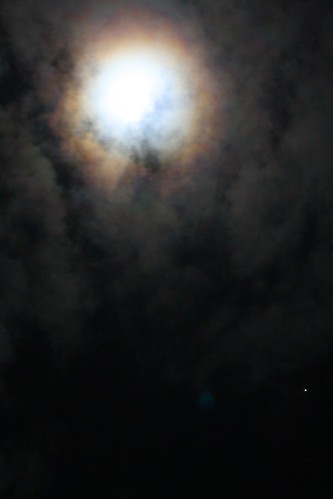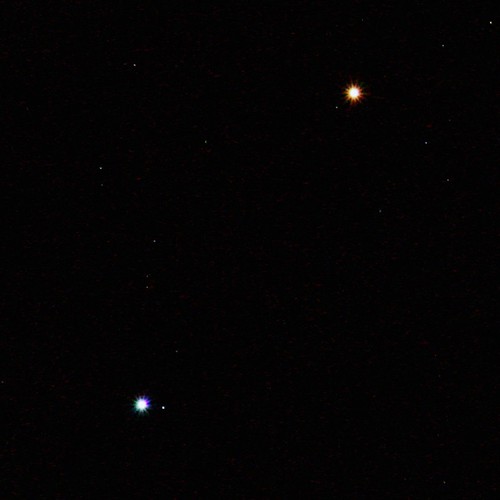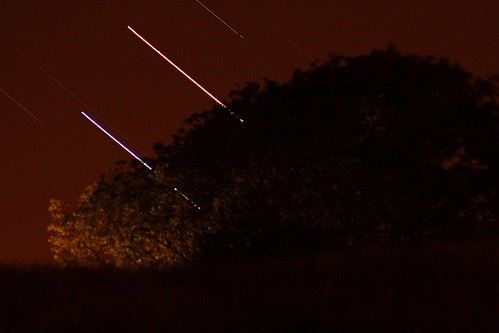Jupiter is the most prominent object to see in the night sky during October, rising just before sunset it is visible throughout the entire night! Jupiter can be found to the East just after sunset, and due to the rotation of the Earth, it appears dues South at midnight. If you go somewhere really dark, you will be able to see your own shadow cast by Jupiter! I've seen that on a few occasions.
Take a look through binoculars or a small telescope, and see if you can spot the four bright Galilean moons that orbit around Jupiter. Our Moon is conveniently close to Jupiter in the night sky on the 19th & 20th of October, acting as a useful guide. The photo' below shows how close they were together last month.

The Moon begins its appear in the evening sky as a thin crescent on the 8th – a beautiful sight in the evening sky. The Moon reaches full Moon, when it is on the opposite side of the sky to the Sun, on the 23rd.
The summer triangle is still visible in October, despite its name, high in the South at 7pm. The three stars that make up the triangle are Vega, Altair & Deneb. Vega is the brightest of the three stars, and there maybe a planet like Jupiter in orbit around Vega (see the wikipeida entry). Altair is interesting because it rotates in just 7 hours! And Deneb is actually one of the brightest stars we know of – some 250,000 times bright than the Sun! The reason it looks fainter than Vega is only because it is much further away – Deneb is some 100 times further away than Vega. If Deneb was as close as Vega, it would be as bright as the Moon!


